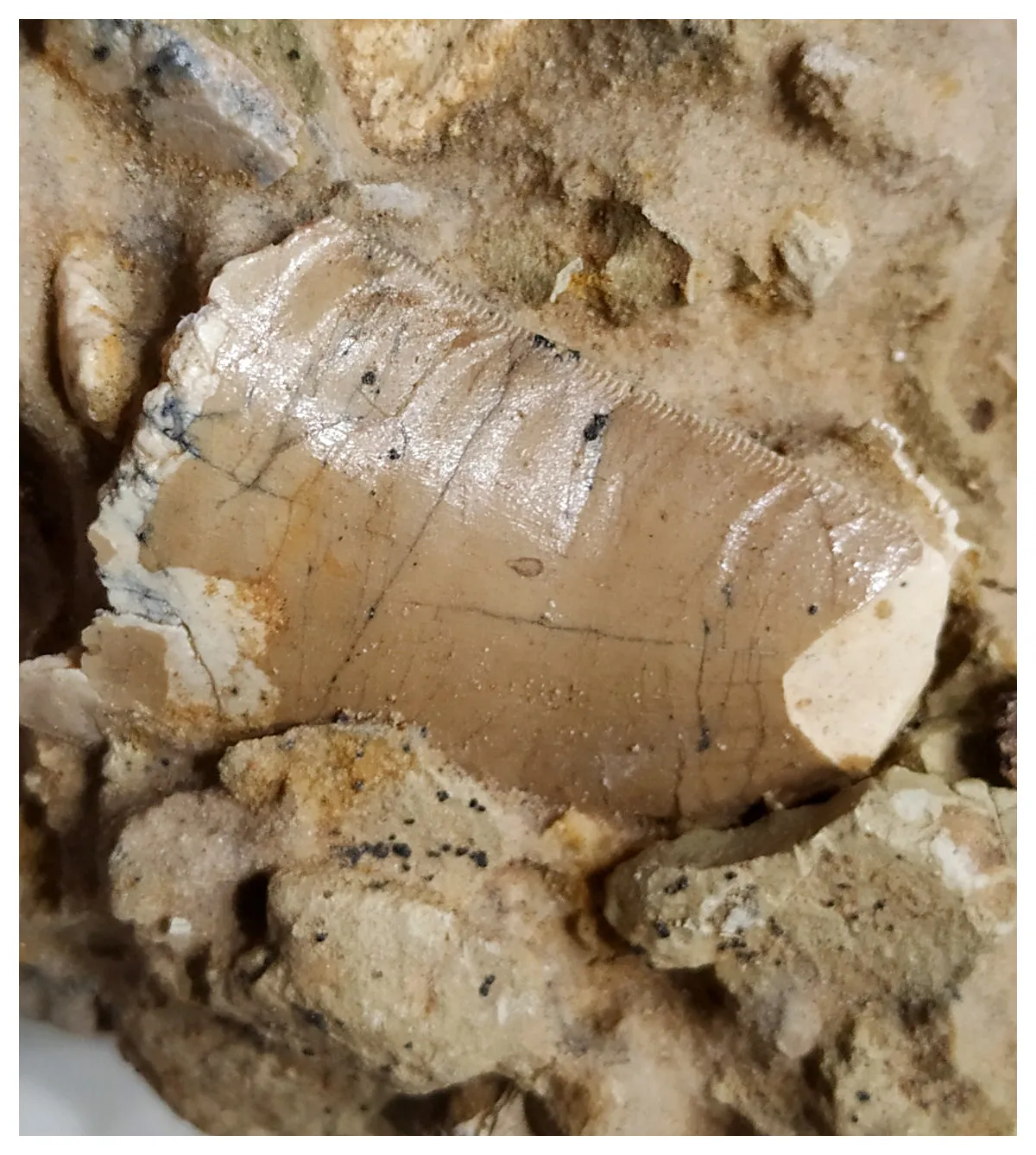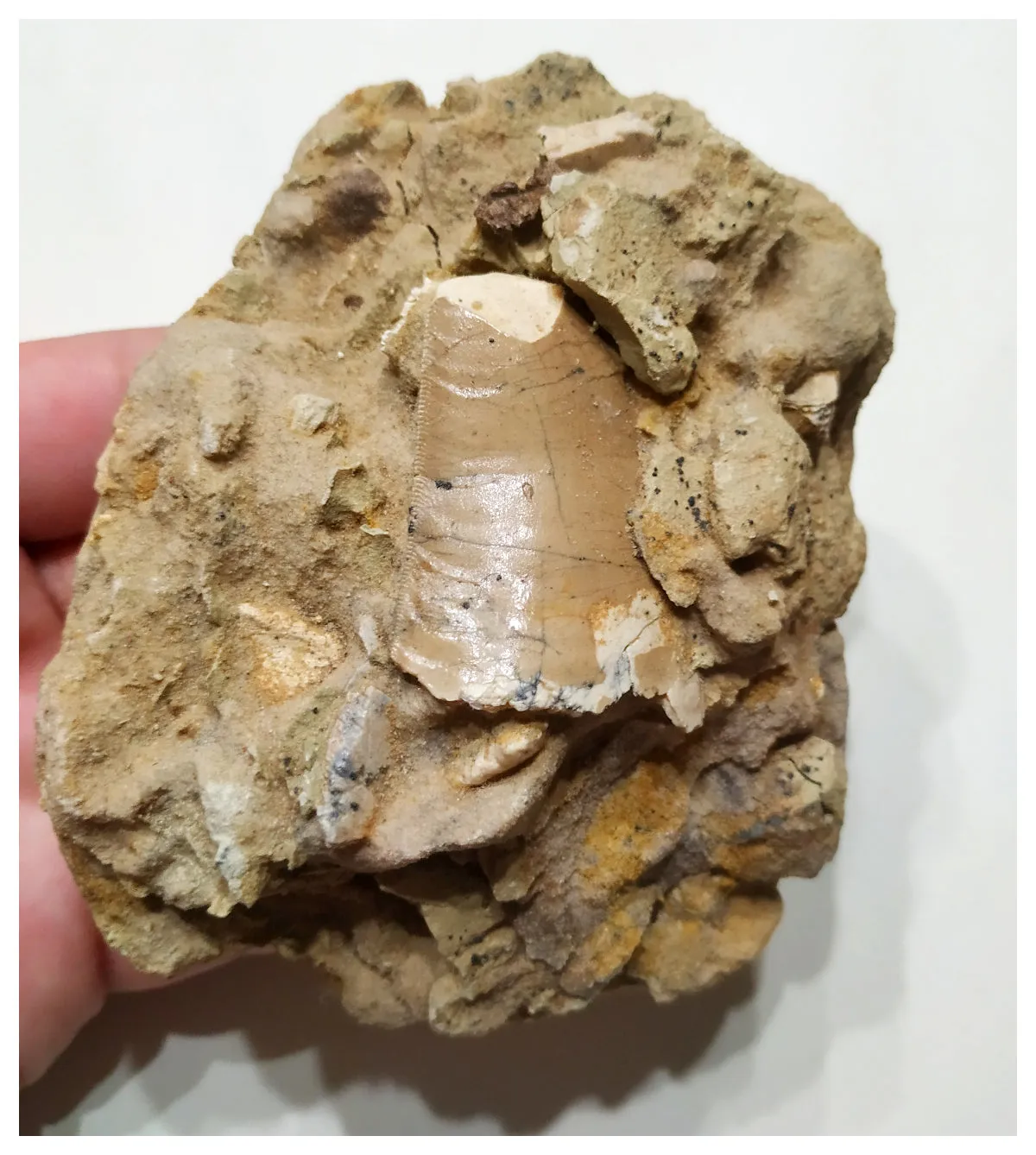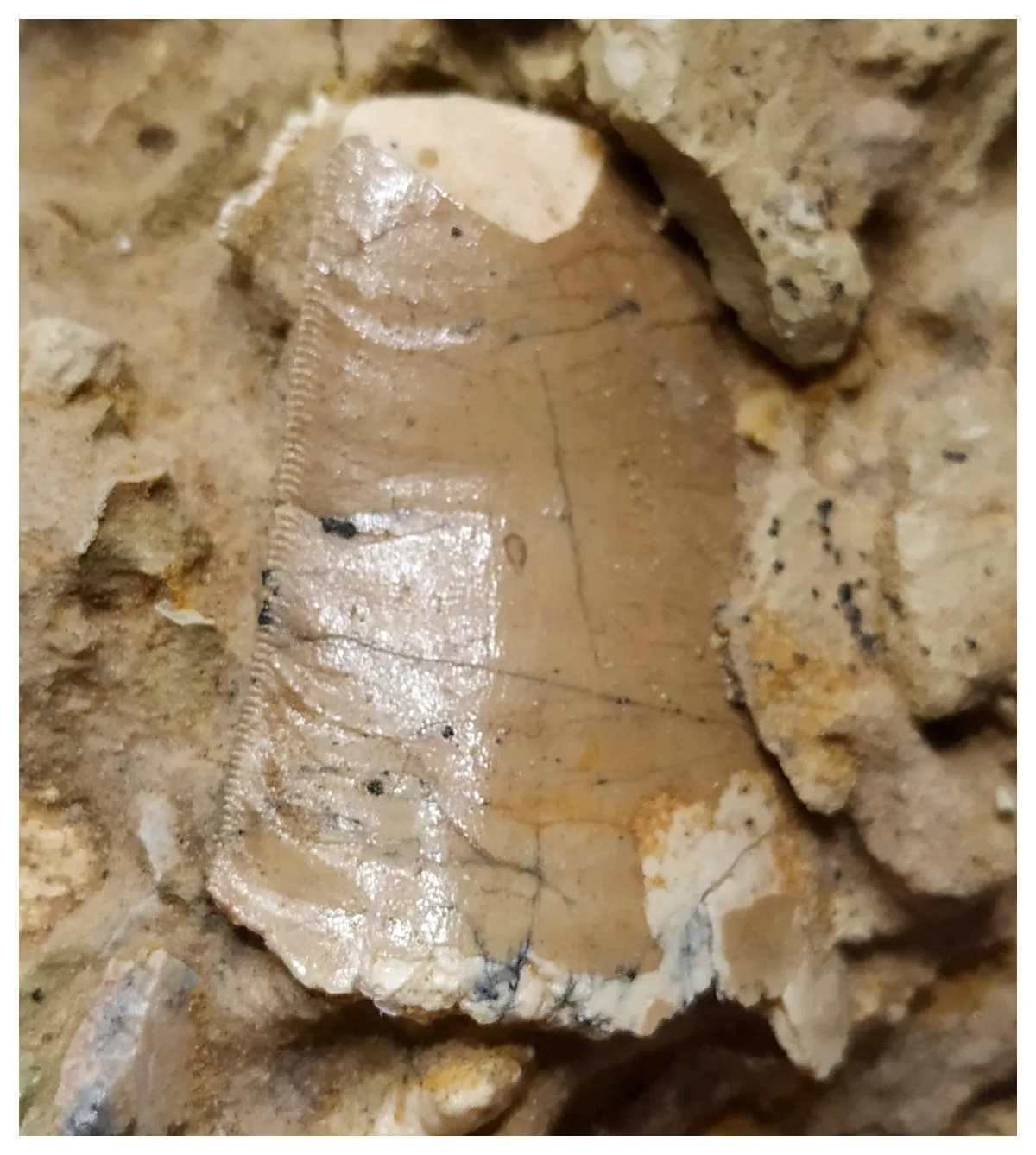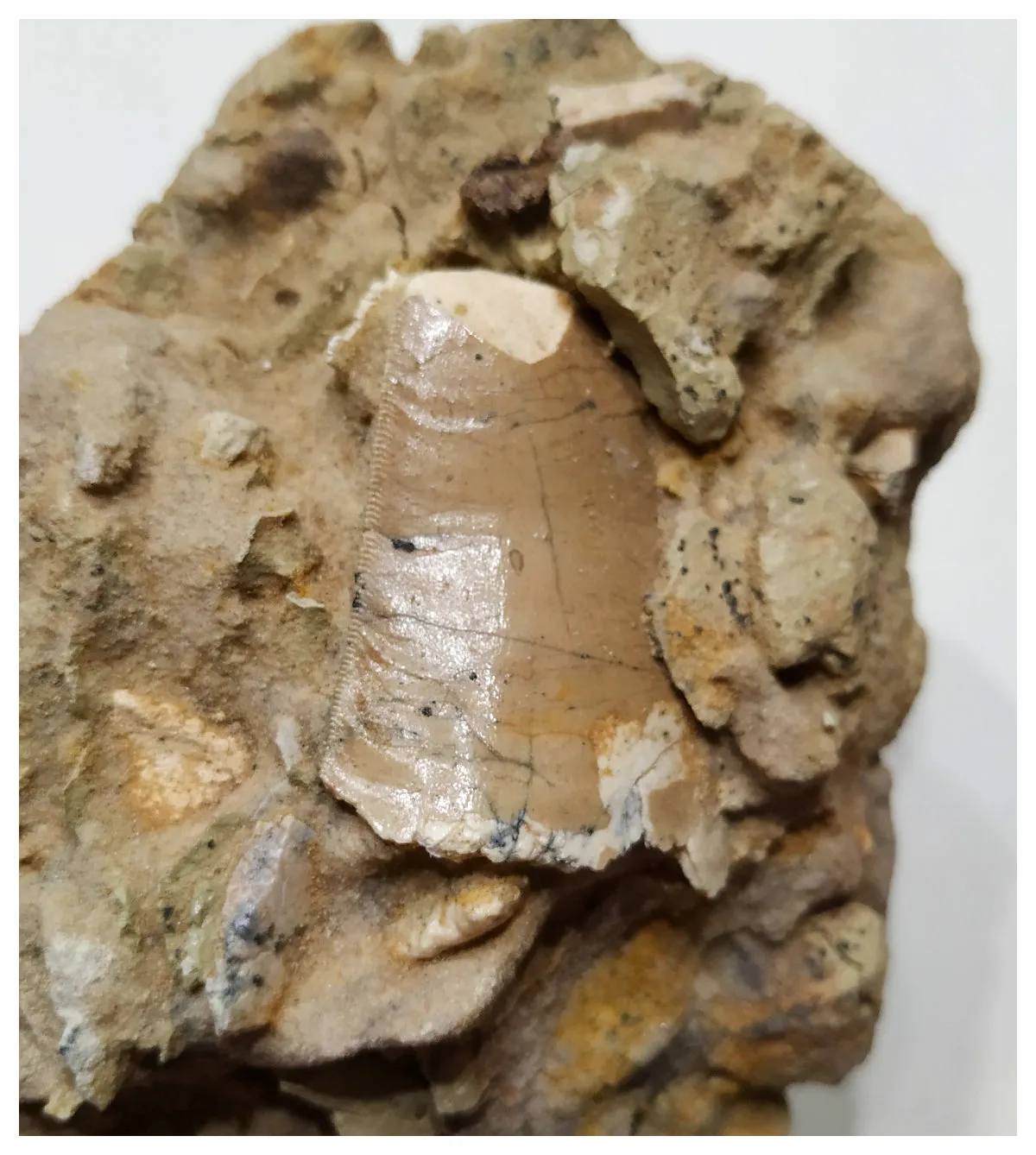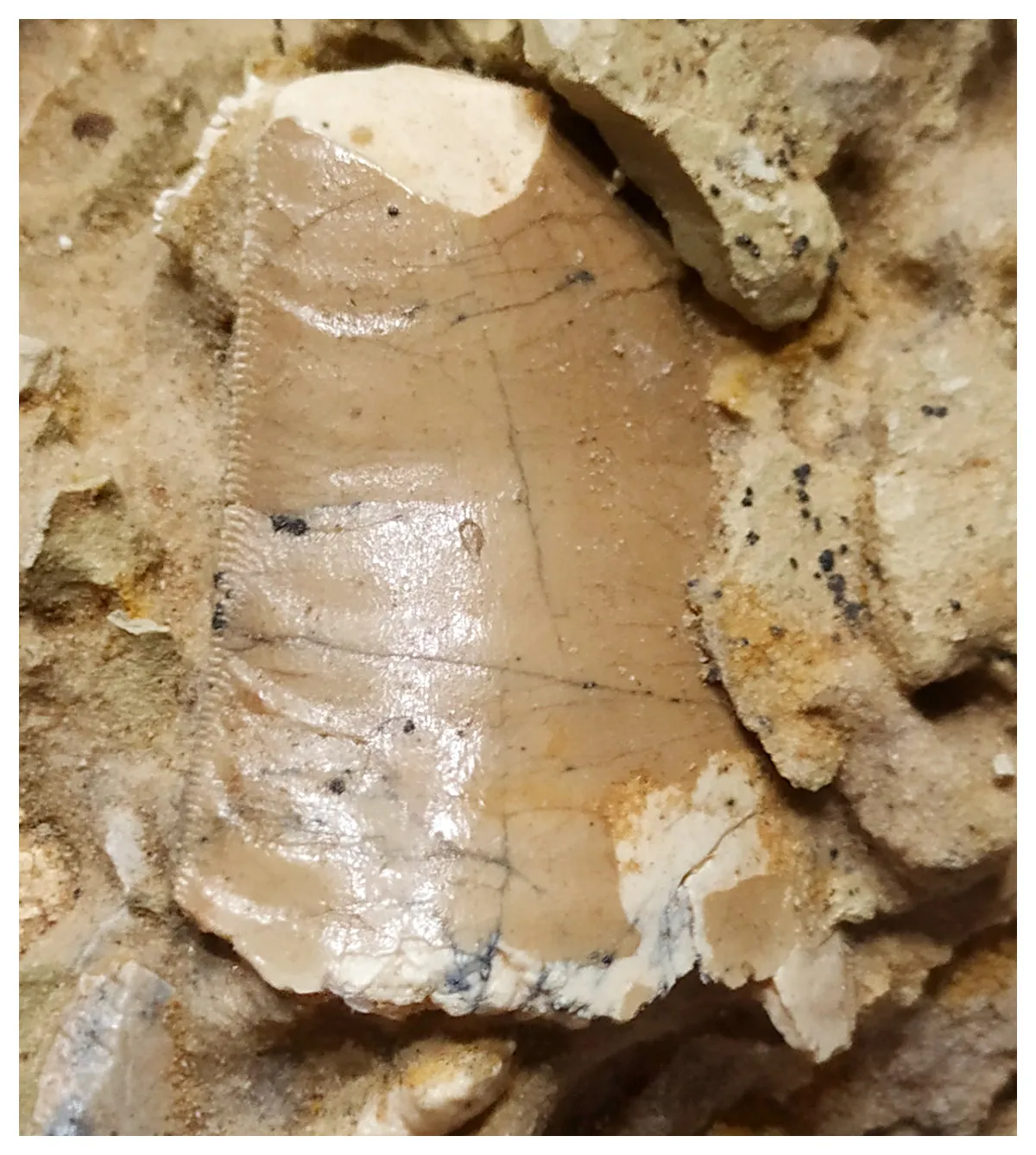Scientific name: Carcharodontosaurus saharicus, Depéret and Savornin 1925
Location: Taouz, South Morocco
Geological Formation: Ifezouane Fm
Age: Upper Cretaceous, Cenomanian stage ( 96 million years)
Size (long): 4.1cm = 1.61 Inch
REF.: G47
DESCRIPTION:
Beautiful serrated tooth. It is preserved in its natural matrix. It is an exceptional collector's item as it is not easy to find the teeth in their natural matrix on the market. It is a wonderful specimen for those who love fossils with a representation of its geological context of origin.
Sometimes the local miners have to excavate long tunnels that follow the distribution of the fossiliferous layer. Carcharodontosaurus is a genus of carnivorous carcharodontosaurid dinosaurs that existed between 100 and 94 million years ago, during the Cenomanian stages of the mid-Cretaceous Period. It is currently known to include two species, C.saharicus and C.iguidensis, which were among the larger theropods, as large as or slightly bigger than Tyrannosaurus and possibly slightly larger than Giganotosaurus, but not quite as large as Spinosaurus.
The different Geological Formations that make up the orography of the Cretaceous in the South East of Morocco have been mostly treated in an undifferentiated and not too accurate way by collectors, by Paleontology aficionados and by fossil dealers.
Historically, fossils dealers from all around the world have identified the dinosaur pieces from this sector as belonging to the Tegana Formation. However, in a formal way, most of the last published studies refer to other nomenclature in the description of the units and formations of the Lower and Upper Cretaceous.
That's why next we include an interesting link where the Aoufous Formation and the Ifezouane Formation are described, making reference to their age, geological history, sedimentology, stratigraphy and vertebrate assemblage. It includes a brief explanation of the stratigraphic concepts that have been established formally until today in the studies of this sector of Morocco.
Picture: Geological contextualization of North Africa outcrops: Tannina Alloul et al., 2018.
Picture: Geological map and statigraphic section of KemKem Cretaceous outcrops Cavin L et al., 2015.
This way, the precise stratigraphic understanding of the origin of the rests, as well as the sedimentological analysis, enables a better paleoecologic characterization of the environments where this amazing dinosaur assemblage lived.

